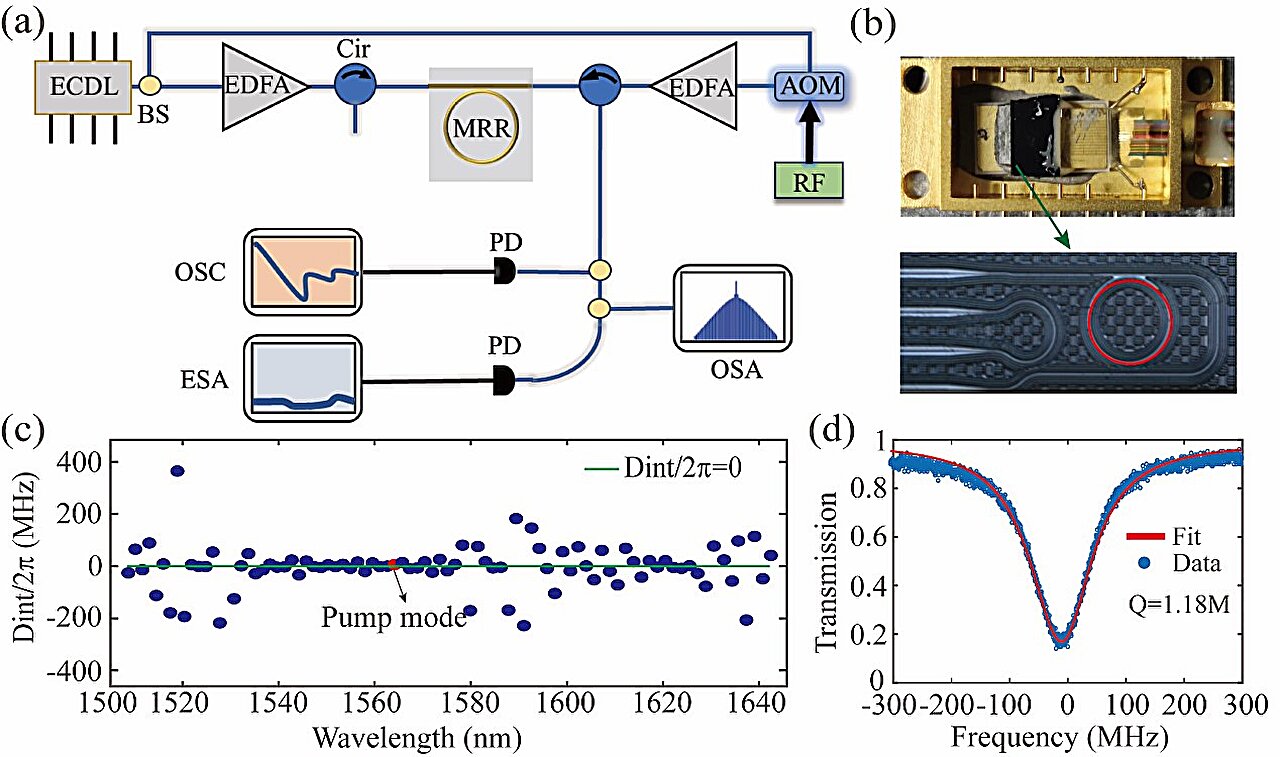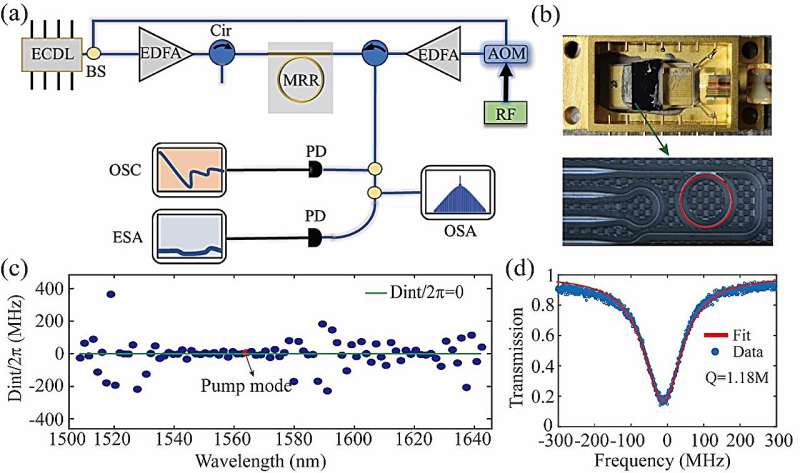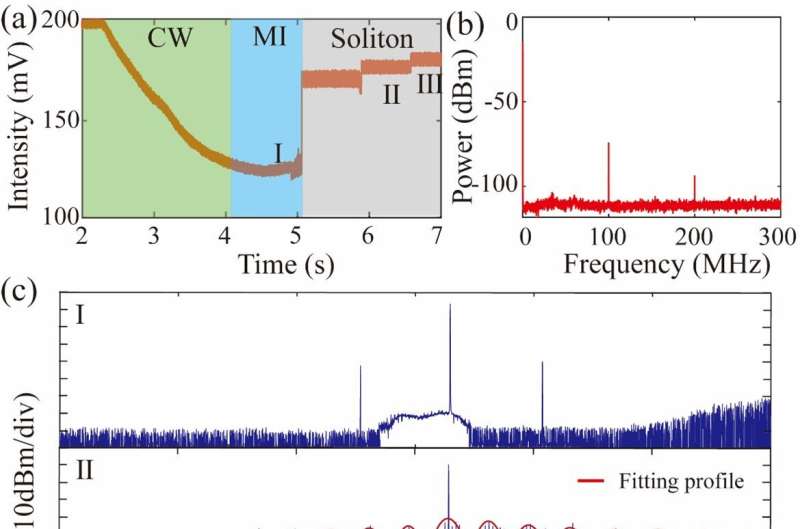

Optical chip-related technology is the inevitable path to retain the validity of Moore’s Law, which has become the consensus of academia and industry; it can effectively solve the speed and power consumption problems of electronic chips. This tech is expected to subvert the future of intelligent computing and ultra-high-speed optical communication.
In recent years, an important technological breakthrough in silicon-based photonics has focused on the development of chip-based microcavity soliton optical frequency combs, which can generate uniformly spaced frequency combs through optical microcavities. Because of its advantages of high integration, wide spectrum, and high repetition frequency, chip-based microcavity soliton light source has potential applications in large-capacity communication, spectroscopy, microwave photonics, precision measurement, and other fields.
In general, the conversion efficiency of the soliton optical frequency comb is often limited by the relevant parameters of the optical microcavity. Under a specific pump power, the output power of the microcavity single soliton optical frequency comb is often limited. The introduction of an external optical amplification system will inevitably affect the signal-to-noise ratio. Therefore, the flat spectral profile of soliton optical frequency comb has become the pursuit of this field.
Recently, a team led by Dr. Peng Xie from Nanyang Technological University in Singapore has made important progress in the field of multi-wavelength light sources on flat sheets. The research team developed an optical microcavity chip with flat, broad spectrum, and near zero dispersion and efficiently packaged the optical chip in the way of edge coupling (coupling loss is less than 1 dB).

Based on the optical microcavity chip, the strong thermo-optical effect in the optical microcavity is overcome by the technical scheme of double pumping, and the multi-wavelength light source with flat spectral output is realized. Through the feedback control system, the multi-wavelength soliton source system can work stably for more than eight hours.
The spectral output of the light source is approximately trapezoidal, the repetition frequency is about 190 GHz, the flat spectrum covers 1470-1670 nm, the flatness is about 2.2 dBm (standard deviation), and the flat spectral range occupies 70% of the entire spectral range, covering the S+C+L band.
The research results can be used in high-capacity optical interconnection systems and high-dimensional optical computing systems.
For example, in the large-capacity communication demonstration system based on microcavity soliton comb source, the frequency comb group with large energy difference faces the problem of low SNR, while the soliton source with flat spectral output can effectively overcome this problem and help improve the SNR in parallel optical information processing, which has important engineering significance.
The findings are published in the journal Opto-Electronic Science.
More information:
Xinyu Wang et al, Flat soliton microcomb source, Opto-Electronic Science (2023). DOI: 10.29026/oes.2023.230024
Provided by
Compuscript Ltd
Citation:
Developing a flat soliton microcomb source (2024, January 15)
retrieved 15 January 2024
from https://phys.org/news/2024-01-flat-soliton-microcomb-source.html
This document is subject to copyright. Apart from any fair dealing for the purpose of private study or research, no
part may be reproduced without the written permission. The content is provided for information purposes only.

